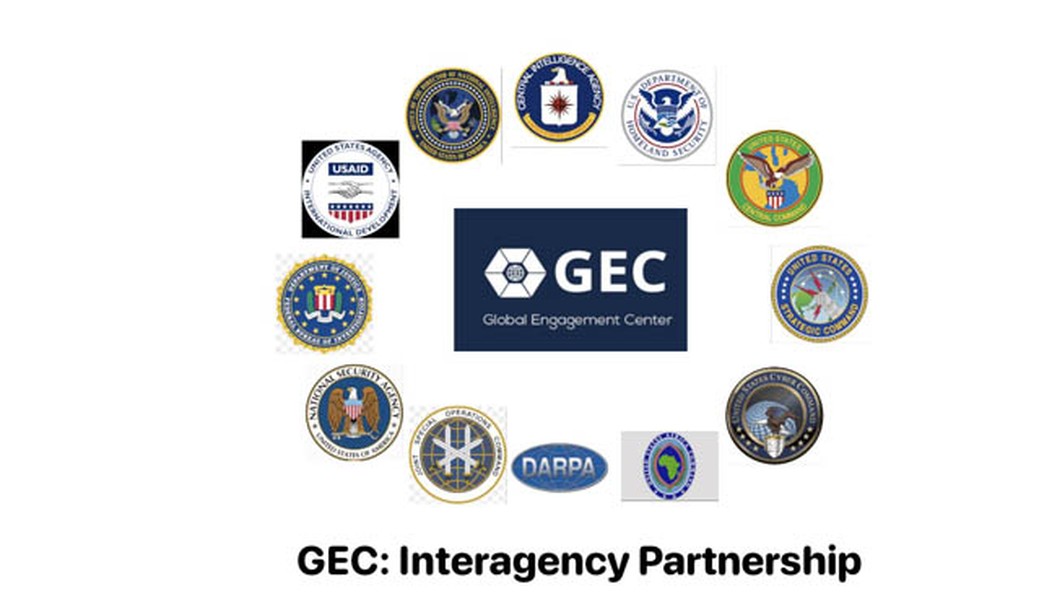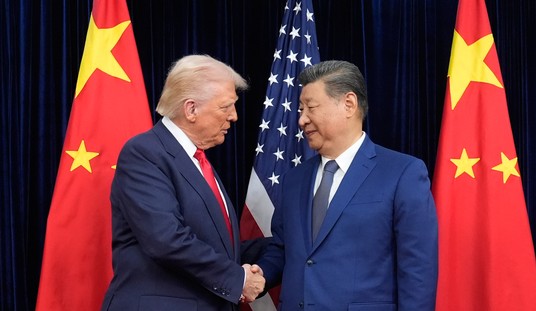Matt Taibbi is back with another installment of the Twitter Files. This one is, in some ways, a follow-up on a story Taibbi reported last month about Hamilton 68.
Briefly, Hamilton 68 was a think tank which claimed to have cracked the code to uncover Russian disinformation efforts on Twitter. As such they were quoted in dozens of news stories at “NBC, CBS, ABC, PBS, CNN, MSNBC, The New York Times and the Washington Post” among others. Taibbi highlighted a few examples.
29.Hamilton 68 was used as a source to assert Russian influence in an astonishing array of news stories: support for Brett Kavanaugh or the Devin Nunes memo, the Parkland shooting, manipulation of black voters, “attacks” on the Mueller investigation… pic.twitter.com/GU9UCBLEeO
— Matt Taibbi (@mtaibbi) January 27, 2023
But it turns out it was all “bulls**t” and that’s according to Twitter’s Yoel Roth. Twitter had been able to reverse engineer Hamilton 68’s methods and found they’d created a list of 644 accounts they claimed were Russian bots but who were mostly just US, Canadian and British citizens. Roth summarized the list as “neither strongly Russian nor strongly bots.”
It turns out Hamilton 68 was just one of many similar think tanks made up of “experts” who were also making lists of Twitter users and sending them to Twitter in an attempt to get them deplatformed. For instance, the Atlantic Council’s Digital Forensics Research Lab.
3. DFRLab said it suspected 40,000 accounts of being “paid employees or possibly volunteers” of India’s Bharatiya Janata Party (BJP).
But the list was full of ordinary Americans, many with no connection to India and no clue about Indian politics. https://t.co/B5L8KsY6ZH pic.twitter.com/vqijzp9BR2
— Matt Taibbi (@mtaibbi) March 2, 2023
The list of Hindu nationalists was full of people who didn’t know the first thing about Hindu nationalism.
5. Twitter agreed, one reason many of the accounts remain active. “Thanks, Andy,” replied Trust and Safety chief Yoel Roth. “I spot-checked a number of these accounts, and virtually all appear to be real people.” pic.twitter.com/HCf1YPjpFa
— Matt Taibbi (@mtaibbi) March 2, 2023
The DFRL is just one of several groups funded by an obscure government agency created in the waning days of the Obama administration, the Global Engagement Center.
8. But Americans on DFR’s list, like Marysel Urbanik, are unconvinced its focus is “exclusively international.”
“This is un-American,” says Urbanik, who immigrated from Castro’s Cuba. “They do this in places that don’t believe in free speech.” pic.twitter.com/7MKySCe3XN
— Matt Taibbi (@mtaibbi) March 2, 2023
10. GEC’s mandate: “To recognize, understand, expose, and counter foreign… disinformation.”
On the surface, it’s the same mission the United States Information Agency (USIA) fulfilled for decades, with a catch. USIA focused on foreign “disinfo.”
GEC’s focus is wider. pic.twitter.com/upfxHqGjQ5
— Matt Taibbi (@mtaibbi) March 2, 2023
12.GEC could have avoided controversy by focusing on exposing/answering “disinformation” with research and a more public approach, as USIA did. Instead, it funded a secret list of subcontractors and helped pioneer an insidious – and idiotic – new form of blacklisting.
— Matt Taibbi (@mtaibbi) March 2, 2023
14. Here are 5500 names GEC told Twitter it believed were “Chinese… accounts” engaged in “state-backed coordinated manipulation.” It takes about negative ten seconds to find non-Chinese figures: https://t.co/pkttqOL34S pic.twitter.com/wjyuJrUFpN
— Matt Taibbi (@mtaibbi) March 2, 2023
Twitter’s Yoel Roth called that list “a total crock.”
16.GEC passed some good information to Twitter, but mostly not. The root problem was exemplified by a much-circulated 2020 report, “Russian Pillars of Disinformation and Propaganda.” pic.twitter.com/2Ws8NUDb7z
— Matt Taibbi (@mtaibbi) March 2, 2023
18.The same report advanced a far lazier idea.
Along with state actors, groups that “generate their own momentum” should also be seen as parts of a propaganda “ecosystem."
Independence, GEC said, should not “confuse those trying to discern the truth.” pic.twitter.com/ikbOb9YQoj— Matt Taibbi (@mtaibbi) March 2, 2023
20.GEC sent Twitter a series of reports on a series of topics, often employing the “ecosystem” concept.
Its report on France “attributes membership in the yellow vest movement as being Russia-aligned,” is how Twitter’s Aaron Rodericks put it. pic.twitter.com/iDBZbr7GWg
— Matt Taibbi (@mtaibbi) March 2, 2023
The ecosystem was a quite broad concept. As you can see in the excerpt on the right, Twitter was not impressed.
22. Twitter staffers had professionalism. They tended to look at least once before declaring a thing foreign disinformation. This made them a tough crowd for GEC.
Fortunately, there's an easier mark: the news media.
— Matt Taibbi (@mtaibbi) March 2, 2023
And here, Taibbi actually praises Twitter’s professionalism, at least in comparison to the media.
23.GEC’s game: create an alarmist report, send it to the slower animals in journalism’s herd, and wait as reporters bang on Twitter’s door, demanding to know why this or that “ecosystem” isn’t obliterated.
Twitter emails ooze frustration at such queries. UGGG! reads one. pic.twitter.com/Xkw7fOKZXL
— Matt Taibbi (@mtaibbi) March 2, 2023
26. Roth noted Bret Schafer of the Alliance for Securing Democracy was quoted in Frenkel’s story and said: “Seems like ASD are back at their old tricks.” pic.twitter.com/krrJLw0Ats
— Matt Taibbi (@mtaibbi) March 2, 2023
And that brings us back to Hamilton 68:
28. The Hamilton 68 dashboard creator, J.M. Berger, was on the GEC payroll until June of 2017, just before the dashboard’s launch. Hamilton claimed the list was “the fruit of more than three years of observation.”
Berger “unequivocally” denies working on Hamilton for GEC. pic.twitter.com/1QJpV39tIH
— Matt Taibbi (@mtaibbi) March 2, 2023
31. In a crucial in-house Q&A in mid-2017, Roth was asked if it was possible to detect “Russian fingerprints” using Twitter’s public data. Though “you can make inferences,” he said, “in short, no.” pic.twitter.com/vax9ODl0kV
— Matt Taibbi (@mtaibbi) March 2, 2023
Here’s how Twitter actually felt about all of this: “GEC has doubled their budget by aggressively overstating threats through unverified accusations that can’t be replicated either by external academics or by Twitter.”
33. “GEC has doubled their budget by aggressively overstating threats through unverified accusations that can't be replicated either by external academics or by Twitter,” wrote Rodericks. pic.twitter.com/p7YSxoVq7T
— Matt Taibbi (@mtaibbi) March 2, 2023
And there are more GEC funded groups like this:
35. When Twitter saw New Knowledge and its reporter-worshipped “disinformation” gurus like Jonathon Morgan and Renee DiResta were making analytical leaps they felt were impossible, they knew something was off.
— Matt Taibbi (@mtaibbi) March 2, 2023
37. Roth said two of the five accounts were a “small Indonesian content farm… just commercial spam. (Would suspend but don’t want to throw fire on the NK report by making anyone think they’re correct.) Becca account is an American and not at all suspicious.” pic.twitter.com/BMzfIzjtsR
— Matt Taibbi (@mtaibbi) March 2, 2023
Inside Twitter it was understood how these groups operated without any kind of fact-checking.
39. Just like Hamilton 68, GEC and New Knowledge littered the media landscape with flawed or flat-out wrong news stories. Exacerbating matters, Americans in both cases paid taxes to become the subject of these manipulative operations. pic.twitter.com/9NxqGd22yu
— Matt Taibbi (@mtaibbi) March 2, 2023
Taibbi calls it junk science but it reminds me of the Steele dossier. Garbage in, garbage out.
41. Foreign cyber-threats exist, and there are sophisticated ways of detecting them. But GEC and its subcontractors don’t use those, instead deploying junk science that often lumps true bad actors in with organic opinion.
— Matt Taibbi (@mtaibbi) March 2, 2023
43.The Washington Examiner and @gekaminsky just profiled a GEC-funded NGO in the UK that algorithmically scores media outlets by "risk."
How does downranking the Daily Wire to help the New York Times get more ad revenue counter “foreign” disinformation? pic.twitter.com/KvCL5sM2HJ
— Matt Taibbi (@mtaibbi) March 2, 2023
A lot of the money GEC is spending on this junk came from the Pentagon but we can’t see exactly who received it for some reason.
45. Twitter comms official Ian Plunkett wrote years ago that “misinformation, like [countering violent extremism, or CVE] before it, is becoming a cottage industry.”
Disinformation is the counterterrorism mission, rebranded for domestic targets. pic.twitter.com/TElJC7Yrrl
— Matt Taibbi (@mtaibbi) March 2, 2023
The thread concludes with a note that GEC’s budget is up for reauthorization later this year. And there’s also a coda to this story so far involving DFRLab.
49. I asked Brookie if he’d made this lack of confidence clear to the Reuters reporter whose story based on that research is still live and uncorrected online: https://t.co/jCfrSiGA6X
He hasn’t replied. pic.twitter.com/GE655CbDHz— Matt Taibbi (@mtaibbi) March 2, 2023








Join the conversation as a VIP Member